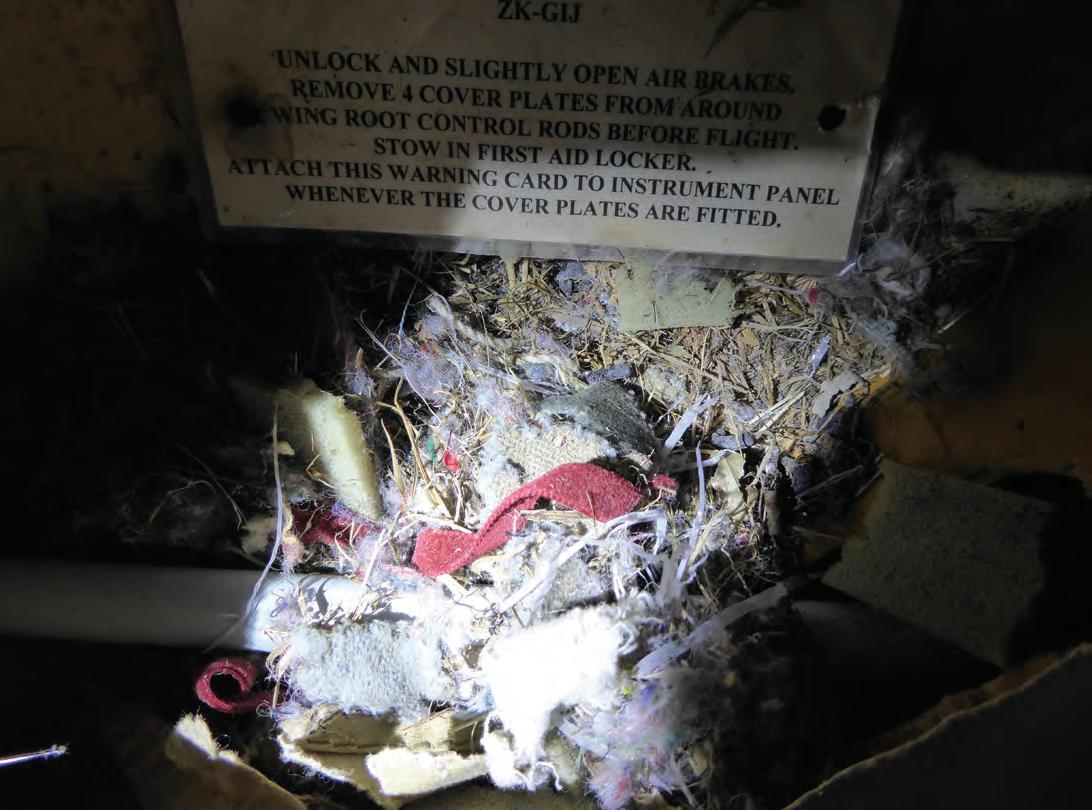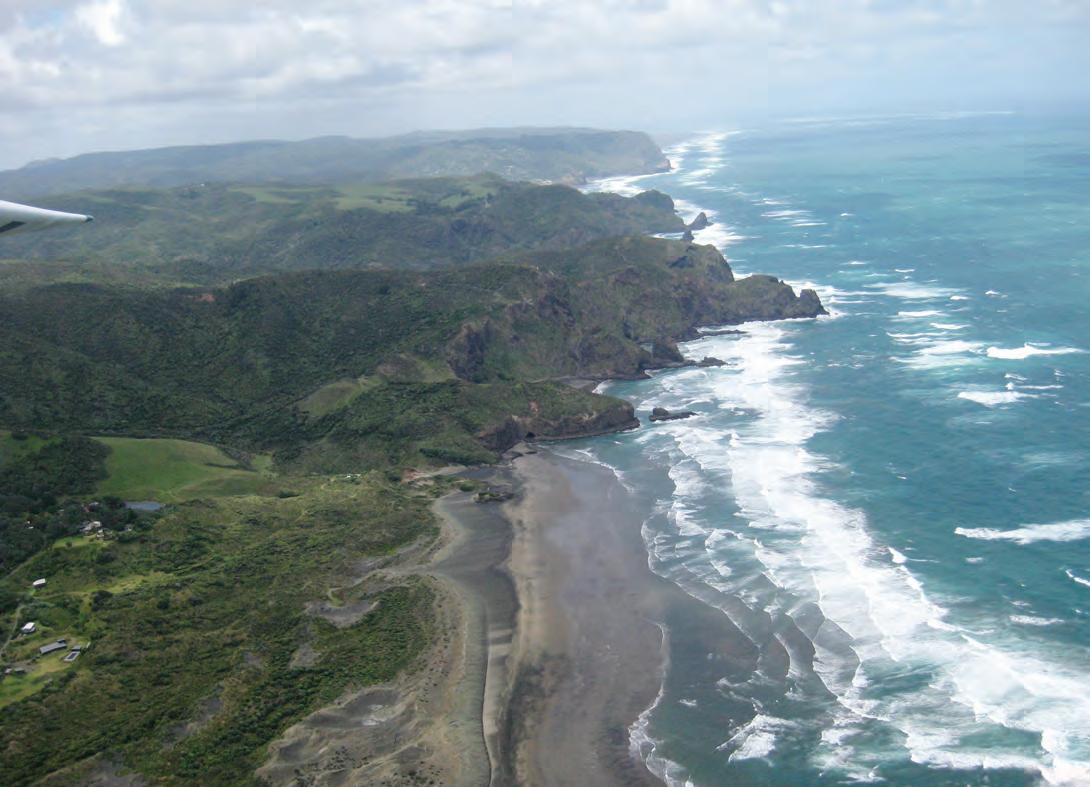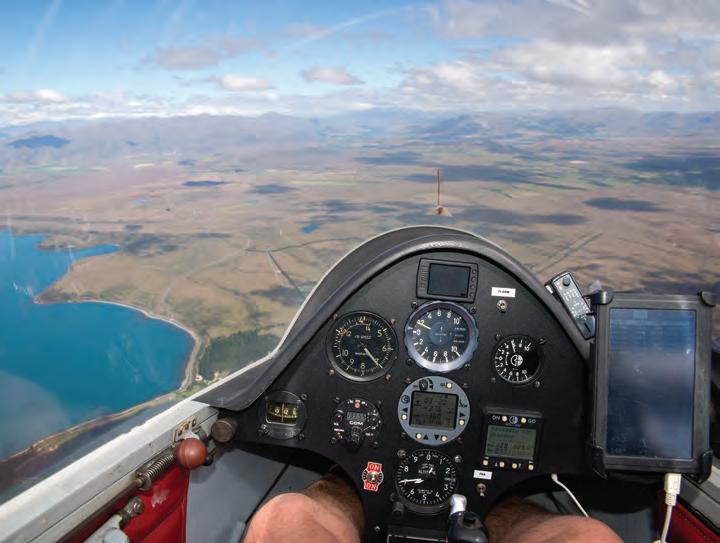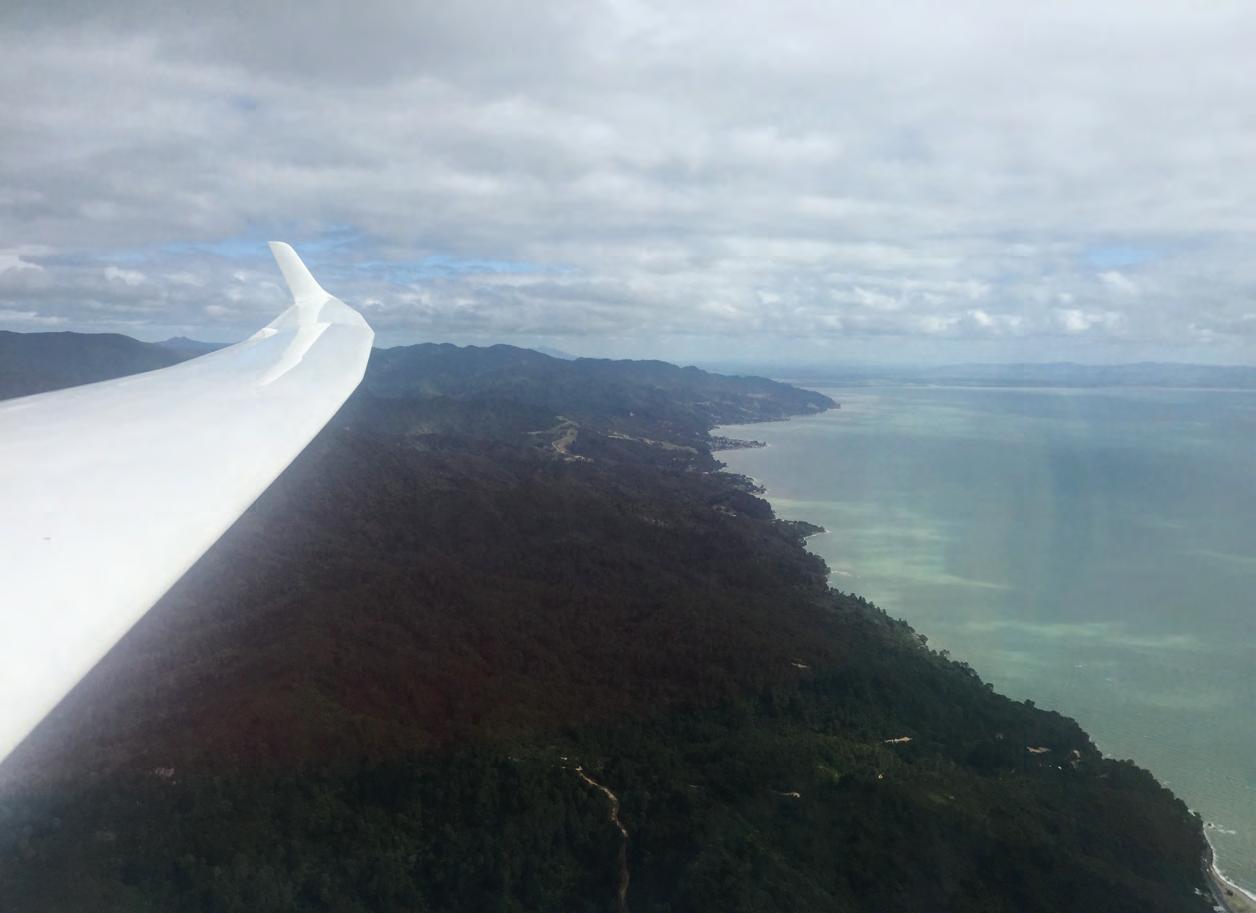5 minute read
A Question of Safety
from SoaringNZ Issue 48
by mccawmedia
Next Article
The idea is to remove all those stressful and disappointing things about normal FAI style competition flying. We made a few mistakes and at times failed to explain tactics and strategy to those newer to the game.
for scoring. This made for good advertising as well. It also enlightened many as to how useful and fun the OLC tool is for analysing our own soaring and comparing with other flights.
Normally the weather settles in Drury during this period but this year the westerly winds stayed and were sometimes 15-20 knots. Tasking was made easier by Greg’s accurate predictions but using the Kaimais was normally the best way to get kilometres stacked up. I even made Thames airfield a finish point (because we can make our own rules), just to accommodate the K8 and lower performing gliders so that getting back home was not so crucial. Overall the different ideas were successful, I think, with Rae Kerr and Maurie Honey (K8 & PW5) still getting enough points to challenge the gliders with much higher handicaps. I didn’t get too inventive about the tasking but by the end we were all getting a better idea on how to create a fairly fair playground, yet still challenge the pilots. Another great thing was that some pilots who hadn’t had much chance to leave our airfield recently found themselves having some great flights. Ian O’Keefe from Auckland Aviation Sports Club really enjoyed learning about our area’s varied weather with thermals and convergence flying required in order to get back over the Bombay hills. We didn’t get great cloud bases either, so leaving home base with only 2500 feet and lobbing into the valley to the east was sometimes bloody daunting.
We used one non-flyable afternoon to visit the Warbirds hangars at Ardmore. It was quite an honour to be given a tour for a couple of hours, leisurely inspecting these rare and usable (mostly) aircraft. This organisation is remarkable and the collection amazing. A look at Avspecs hangar was also fantastic as they are quickly (for this sort of thing) restoring (building actually) another Mosquito fighter. Thanks to these enthusiastic people for sharing and showing us their passion.
The wind-up dinner was held on the Saturday night and due to a very poor weather forecast we decided to end after six days of fun. The meal was superb which is not surprising as it was organised by one of NZ’s best chefs. The meal was fully booked and over 60 people enjoyed the quality event at our own club facility. The weather co-operated too and the evening was able to be held out on our decking, facing the beautiful vista of the Drury hills bathed in the setting sunlight. This idea of keeping those associated with the pilots as happy and having as much fun as the competitors is a key thing we will work on for the future. With the support we have, I think we can improve a huge amount. Simon’s help and enthusiasm has been invaluable and he deserves thanks, along with many hard working members, too many to thank individually, so thanks to them as well.
The winner was Patrick Driessen with Ross Gaddes and Maurie Honey in 2nd and 3rd places. We flew 18,137 OLC kilometres over the six days. We had a few land outs but had no damaged gliders and the fun level was about as good as it gets.
Again and lastly – thanks to Audi NZ, Cookie Time and Pilot Brewery – let’s hope they continue support us going forward into the future.
STEVEN CARE National Operationals Officer
Accidents
So far this year we have only had two accidents, which is a significant reduction from previous years. The key has been pilots (particularly instructors) looking carefully at operational threats and mitigating them wherever possible. All I can say is keep up the good work.
2016-17 2015-16 2014-15 2013-14 2012-13 2011-12 2 010-11 2 3 11 10 9 11 12
Overseas Visiting Pilots
It is really important that we treat visiting pilots well. They bring an added dimension to our sport that we would not get elsewhere; so it is important that we get the paperwork and processes done accurately and efficiently. Try not to second guess their needs or leave the visitor in limbo. Find out and/or ask if you are unsure about anything – their hours and experience, their intentions and expectations.
Winch Ops
There has been a recent non-injury winch accident; the first for many decades. It is one that could have happened to anyone, at any of our clubs that winch. This is a good reminder that all winch pilots should be familiar with the BGA Safe Winch Launching presentation from their web site. One of the key points in the presentation is, if a wing touches the ground during acceleration, the launch must be aborted. This can be counter intuitive because we are all used to successfully picking up a dropped wing on aero tow and I have often seen pilots ‘get away with it’ on a winch launch. Subconsciously we say to ourselves, ‘give it a second and then release if it doesn’t come right’. However, circumstances can change very rapidly during a fast acceleration. If things don’t work in your favour, that second you thought you had can be gone in an instant, leaving no time to react.
Vision
In gliding we are 100% reliant on our vision, yet there is no specific medical minimum standards that must be met. As we age, our eye sight can gradually deteriorate without us being aware of it and it is almost impossible to identify if it has ever been the cause of accidents. Our type ‘A’ gliding personalities can also interfere with judging how much loss of eyesight is acceptably safe. Personally, I get my eyes checked by an optician; generally annually. Even if you feel you have 20/20 vision, it is well worth getting a check done from time to time. It is even better, if you encourage others to do the same.










